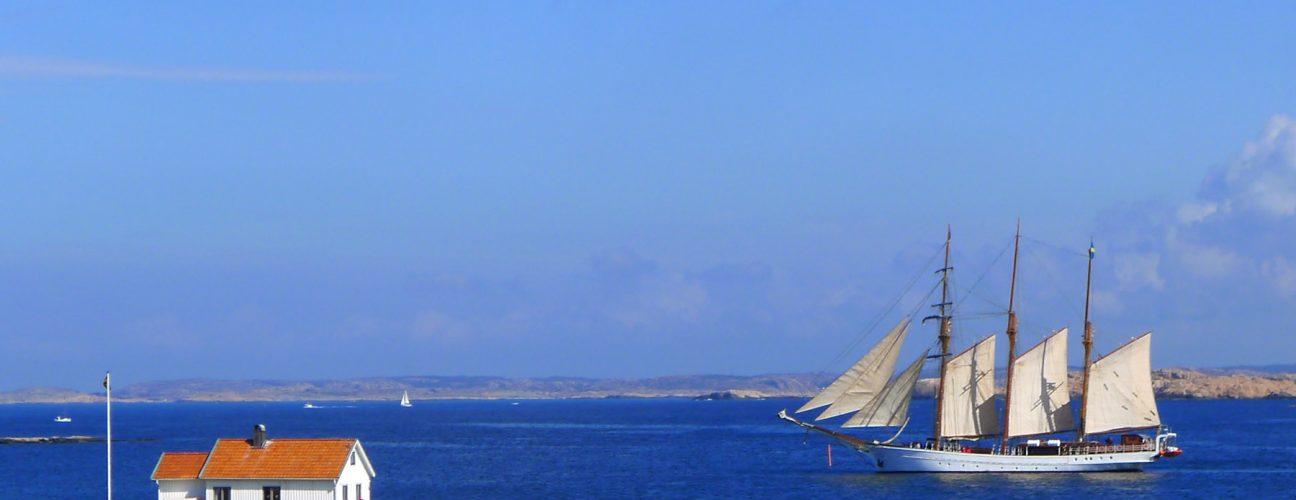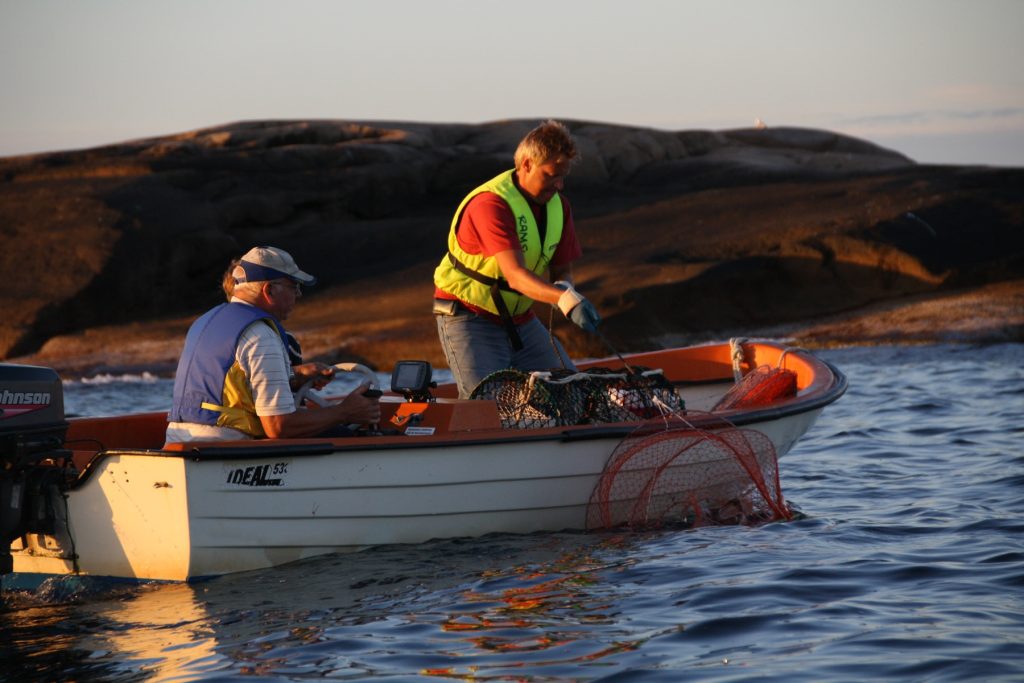



Crab Catching
Bohuslän is well known for its lobster fishing, and start of the lobster season is a big event in the autumn. However, crab catching is exciting too, and the catches are much bigger. With the exception of just over a week from the 15th September, crabs can be caught any time of the year and contain plenty of food. Crabs are caught in pots, just like lobsters, and fish is used as bait for both.
Because the equipment, fishing locations and method are the same as for catching lobster, there is a real risk that you will catch a lobster in your crab pots. From the 1st May until the first Monday after the 20th September, lobsters are protected and must not be caught. If you accidently catch a lobster during this period, it must be returned to the water immediately.

Tobbe’s recipe for boiled crab:
Bring water to the boil in a large saucepan. The size depends on how many crabs you are planning to cook at the same time. For 4 litres of water, add approximately 100 ml coarse salt, 50 ml sugar, half a can of beer (drink the rest) and a bunch of dill. Kill the crab by quickly stabbing it with for example a screwdriver, which is pushed into one of the openings under the flap on the ‘belly’. This kills the crab immediately. Then place the crab in the boiling water (make sure it is completely immersed), boil for 10 min (smaller crab) to 20 min (large). Take the saucepan off the heat, remove the crabs. Leave the liquid to cool slightly. Return the crabs to the liquid and leave in a cold place. The longer the crabs are left in the cooking liquid, the more dill and beer flavour they absorb. Cut the crabs in half using a strong knife and scrape out all the delicious meat. The claws can be cracked using a pair of tongs, however with a little practice you will soon learn to crack them more efficiently with a quick blow, for example by the handle of a normal table knife.
Secret insider tip: Toast and butter a slice of white bread. Spread with a thin layer of Hovmästarsås (mustard and dill sauce) and add a generous mountain of crabmeat. Enjoy with a cold beer. It doesn’t get any better than this – incredibly yummy!
What you need to catch crabs
How to catch crab
ShowBuy a few pots with lines and floats from our local tackle shop, Norden, in Smögen. Or order them in advance from Carapax. The pots must have an escape hole of at least 75 cm (2 x 54 mm during the lobster season). The line should be at least 30 metres long to reach the required depths. The float must be marked with an ‘F’ (for amateur fisherman) and your name/telephone number.
The pot contains a bait bag, in which you place the bait that will attract the crabs. The bait bag usually opens automatically when you open the side of the pot and closes when the door is shut. If you have been fishing and caught a lot of mackerel, the whole fish makes an excellent bait. However, remove the innards first (for your own sake the next day…) and make a couple of cuts across the body to make it smell extra nice. If you have not been fishing, ask a fishmonger if you can have some offcuts for bait.
Travel by boat to a suitable fishing location. Stony seabed, 10 – 25 m deep. Ask Torbjörn for advice, or enquire at the reception. Check that the line is in order and free from knots. Turn off the engine, to reduce the risk of getting the line caught in the propeller. Keep the float separate – it is a good idea to ask someone to hold on to it tightly until you are sure the pot has reached the seabed and you have at least two metres left of the line.
Release the pot and let the line run freely through your hands. Once the pot has reached the seabed, raise it one metre, then slowly let it sink again. Why? Because this confirms that it is placed the right way up on the seabed, and not upside down. If you have a lot of line left (> 10 m) before the float it is advisable to tie this up before you release the float.
Remember where you placed the pot, so you can find it when it is time to empty it! If you have access to a depth finder, you can easily mark the spot, but even a smartphone can be used to find your exact position, for example by using the app from the Swedish Sea Rescue Association.
NB! Important! Don’t release the float until you are certain that the pot is standing on the seabed, and there is at least two metres left of the line! If you let it go too early and the water is too deep, or the line has become tangled, the heavy pot will pull the float down into the water and you have lost your equipment. Worse than this is that the pot will sit on the seabed for several years, catching crabs and lobster. They enter, die, then become bait for other creatures that enter, die… Don’t cause this!
Leave the pots in place at least overnight. The crabs that enter the pot will not suffer any harm from spending longer in there, but it is well-known that the baited pot works best during the first 24 hours. After this, few new crabs will enter the pot, as the bait has been used up.
Make your way to the fishing site and locate your float. Approach slowly and straight into the wind, to minimise the risk of getting the line caught in the propeller. It makes sense to bring a boathook and use it to grab the float and lift it on board. Look out for any other floats in the vicinity. If possible, turn off the engine while the pots are being hauled in.
If you plan to re-bait and put the pots back in, remove the crabs and place them in a bowl. Cover them with a cloth or lid to keep them calm and stop them from fighting each other.
Please note! If you accidently catch a lobster in your pot (during the period when lobsters are out of bounds) it must be returned to the water immediately, at the same location. Don’t even think of breaking the rules when it comes to lobster! This is a very serious and shameful crime in Bohuslän.


